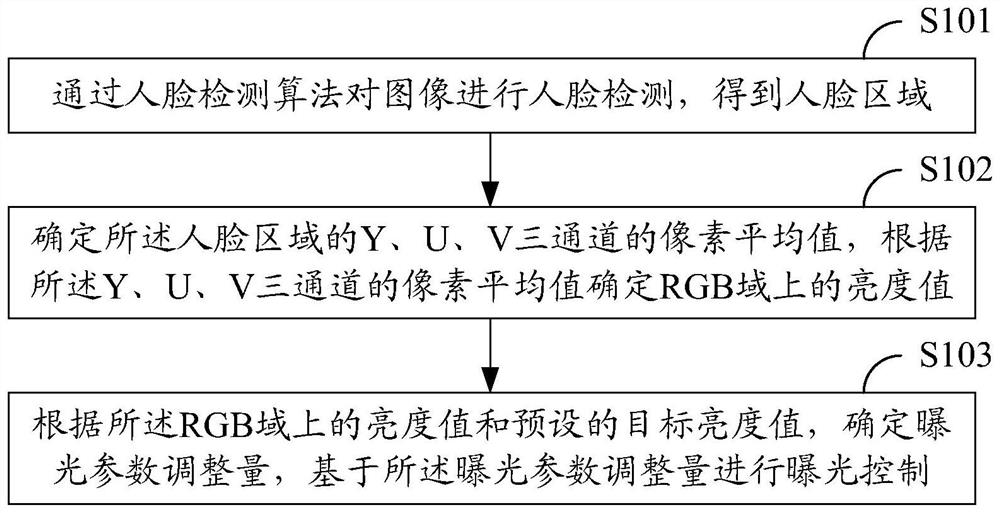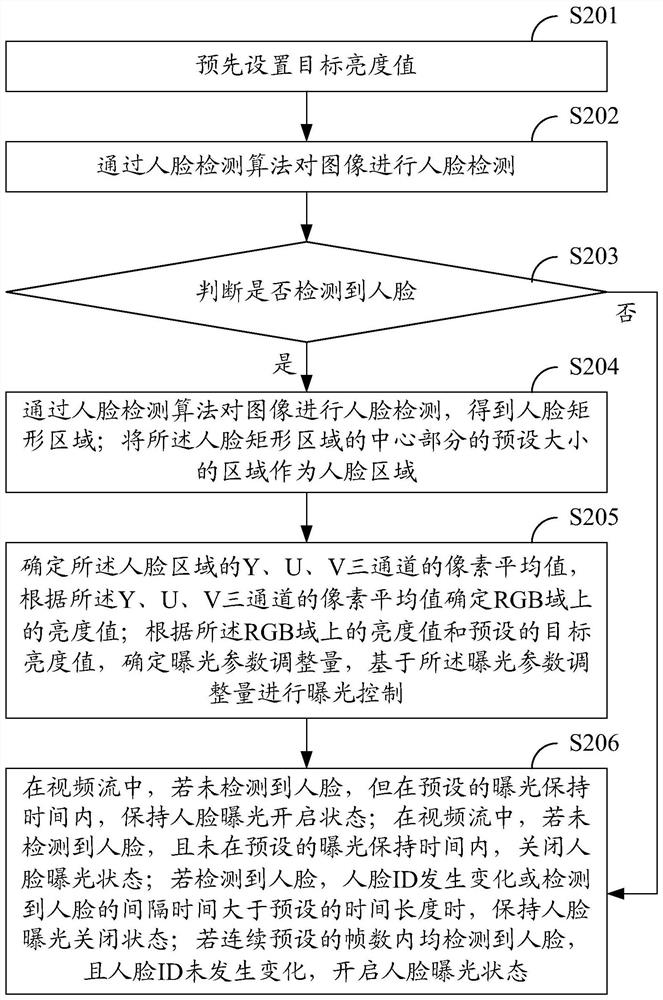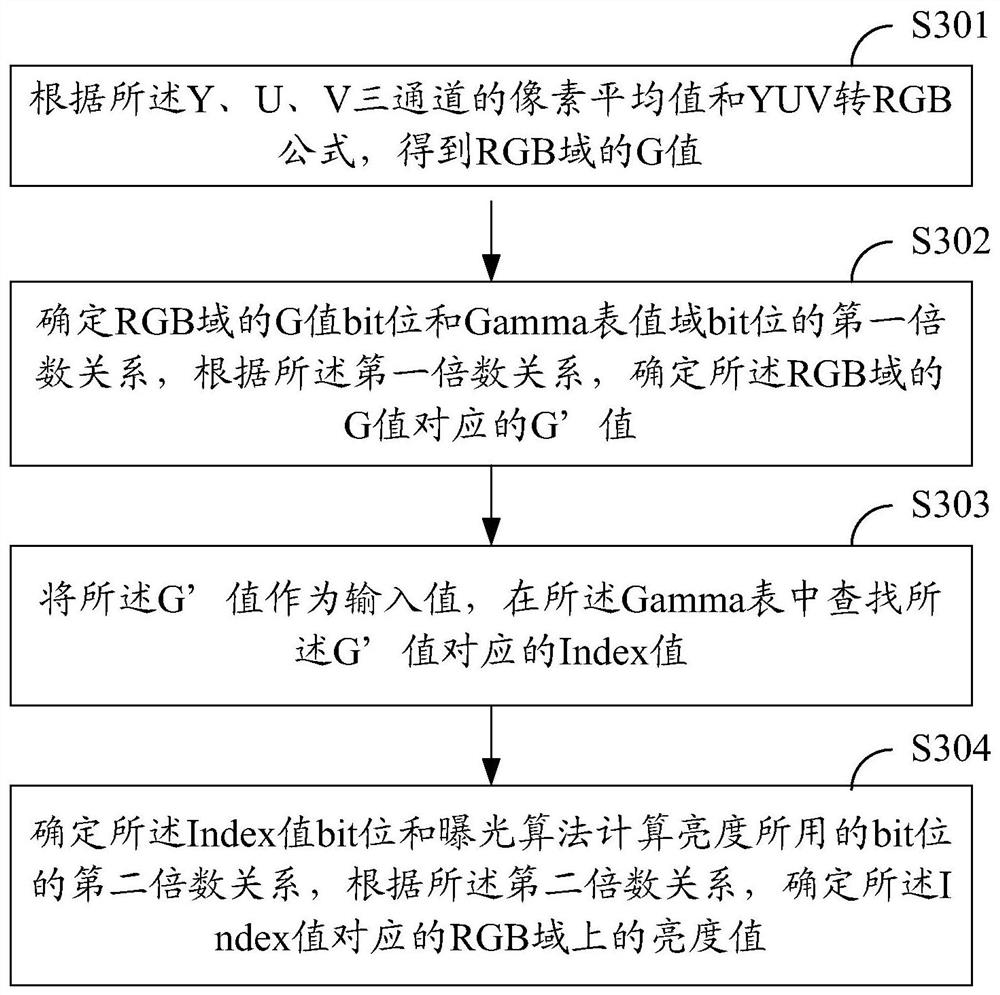Exposure control method and device, electronic equipment and storage medium
A technology for exposure control and exposure parameters, which is applied in the field of image processing and can solve problems such as inaccurate exposure control.
- Summary
- Abstract
- Description
- Claims
- Application Information
AI Technical Summary
Problems solved by technology
Method used
Image
Examples
Embodiment 1
[0062] figure 1 A schematic diagram of the exposure control process provided by the embodiment of the present invention, the process includes the following steps:
[0063] S101: Perform face detection on the image through a face detection algorithm to obtain a face area.
[0064] S102: Determine the pixel average value of the Y, U, V three channels of the human face area, and determine the brightness value on the RGB domain according to the pixel average value of the Y, U, V three channels.
[0065] S103: Determine an exposure parameter adjustment amount according to the brightness value on the RGB domain and a preset target brightness value, and perform exposure control based on the exposure parameter adjustment amount.
[0066] The exposure control method provided by the embodiment of the present invention is applied to an electronic device, and the electronic device may be a PC, a tablet computer, etc., or an image acquisition device such as a camera. If the electronic de...
Embodiment 2
[0073] Face detection is performed on the image through the face detection algorithm, and the obtained face area is a rectangular area of the face, and the face generally only occupies the middle part of the rectangular area. If the brightness statistics are performed on the pixels in the entire rectangular area, the brightness of the background pixels will be introduced, which will increase the statistical brightness error and cause inaccurate exposure control. In order to solve the above-mentioned technical problems, on the basis of the above-mentioned embodiments, in the embodiment of the present invention, the face detection is performed on the image through the face detection algorithm, and the obtained face area includes:
[0074] Use the face detection algorithm to detect the face of the image to obtain the rectangular area of the face;
[0075] An area of a preset size in the central part of the rectangular area of the human face is used as the area of the hu...
Embodiment 3
[0079] In order to make the determination of the brightness value on the RGB domain more accurate, on the basis of the above-mentioned embodiments, in the embodiment of the present invention, the determination of the brightness on the RGB domain according to the pixel average value of the three channels of Y, U and V Values include:
[0080] According to the pixel average of the Y, U, and V three channels and the YUV to RGB formula, the G value of the RGB domain is obtained;
[0081] Determine the first multiple relationship between the G value bit of the RGB domain and the Gamma table value domain bit, and determine the G' value corresponding to the G value of the RGB domain according to the first multiple relationship;
[0082] Using the G' value as an input value, look up the Index value corresponding to the G' value in the Gamma table;
[0083] Determine the second multiple relationship between the Index value bit and the bit used by the exposure algorithm to calculate ...
PUM
 Login to View More
Login to View More Abstract
Description
Claims
Application Information
 Login to View More
Login to View More - R&D
- Intellectual Property
- Life Sciences
- Materials
- Tech Scout
- Unparalleled Data Quality
- Higher Quality Content
- 60% Fewer Hallucinations
Browse by: Latest US Patents, China's latest patents, Technical Efficacy Thesaurus, Application Domain, Technology Topic, Popular Technical Reports.
© 2025 PatSnap. All rights reserved.Legal|Privacy policy|Modern Slavery Act Transparency Statement|Sitemap|About US| Contact US: help@patsnap.com



